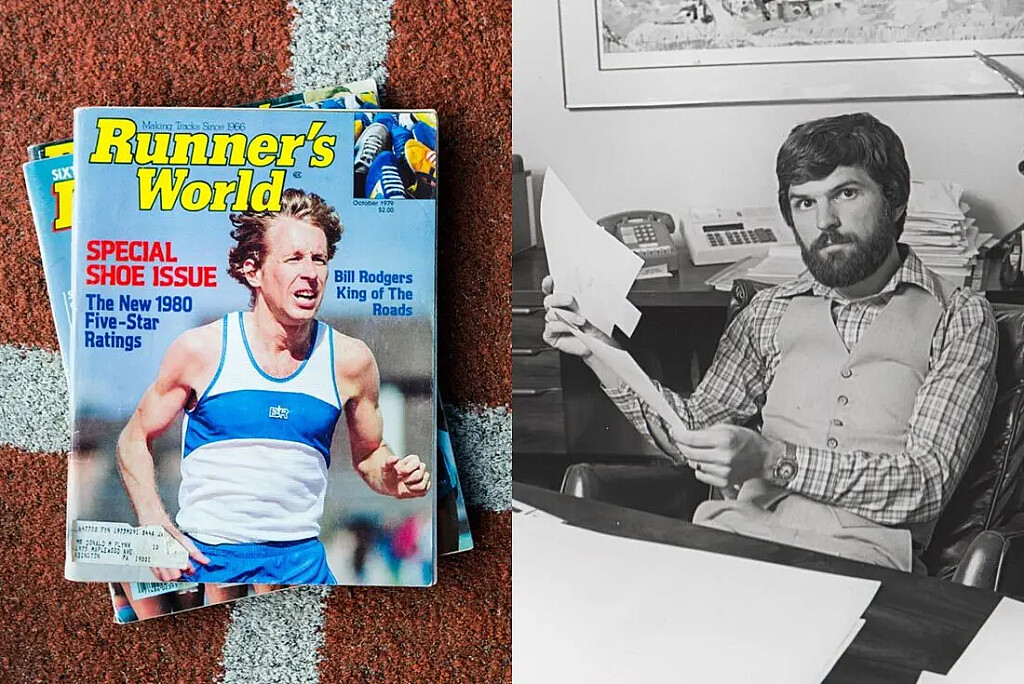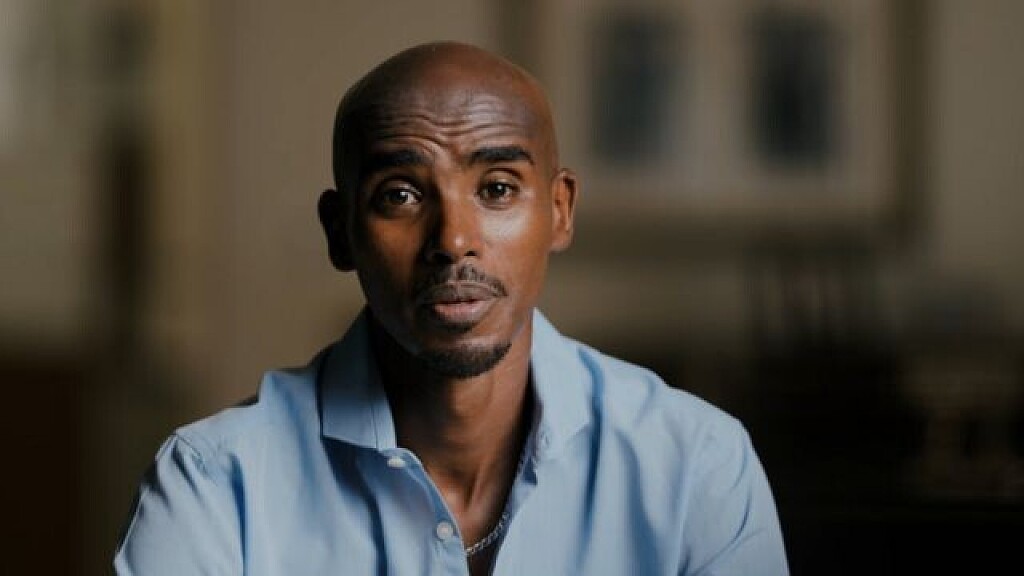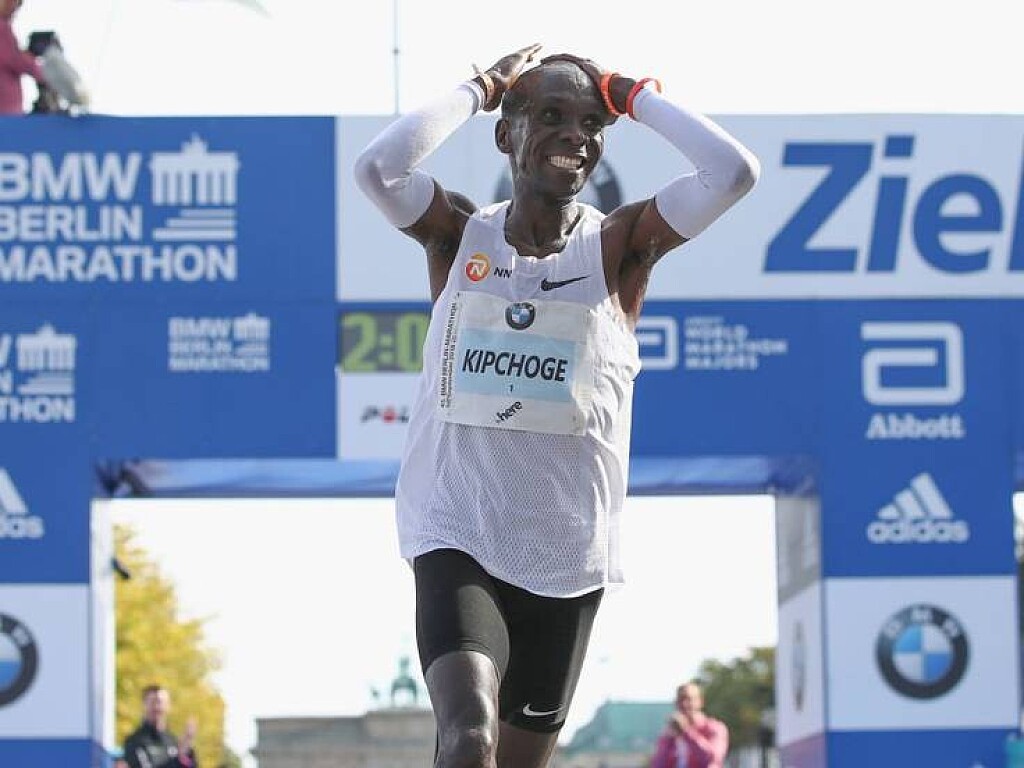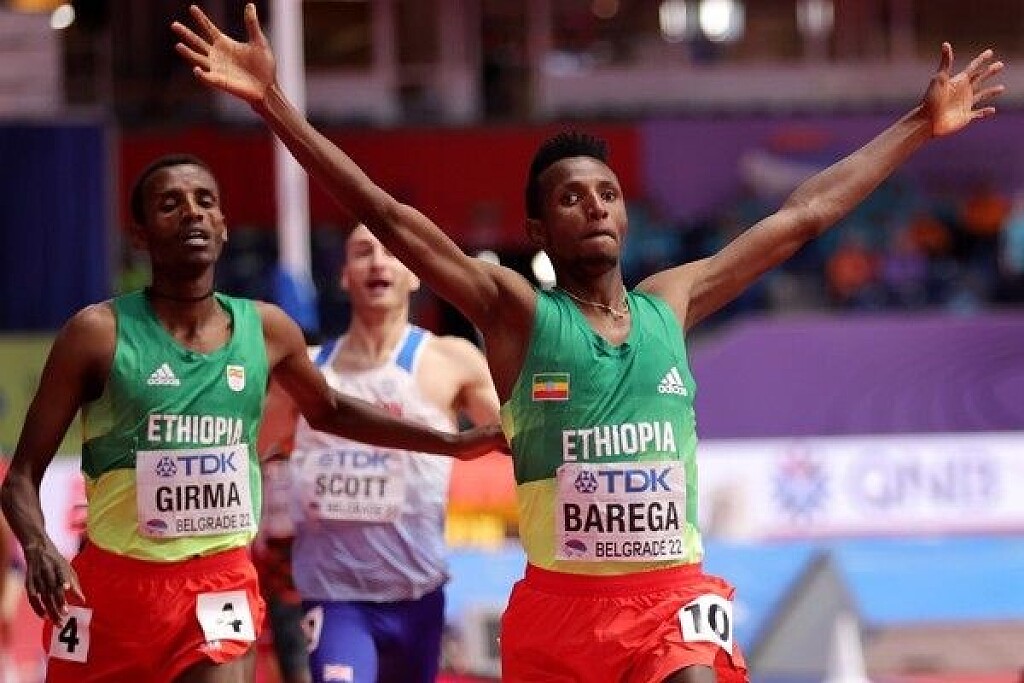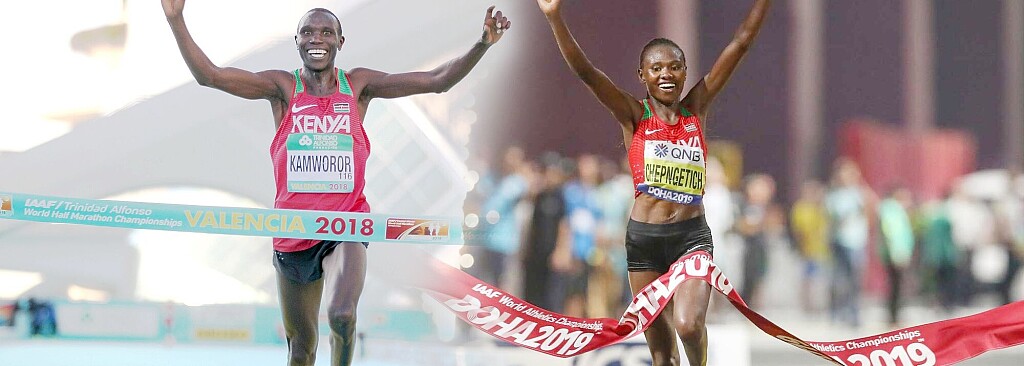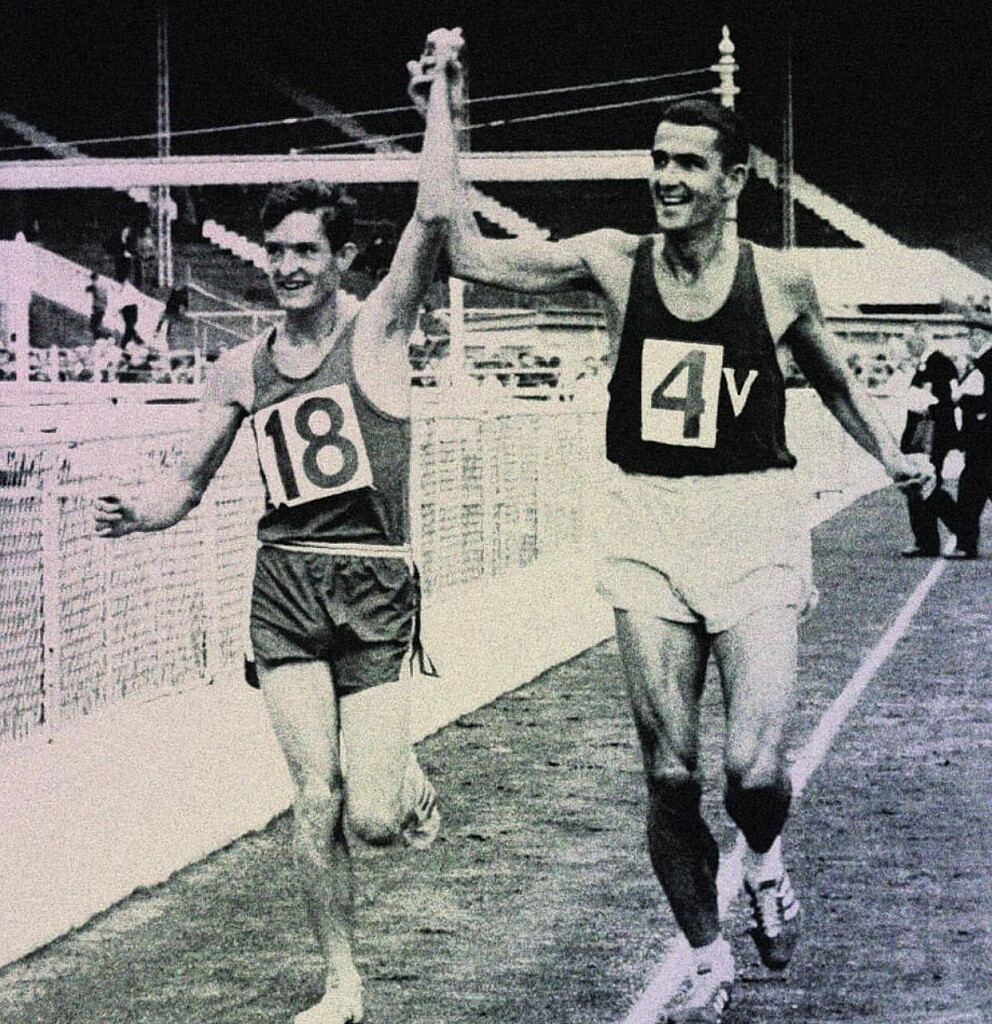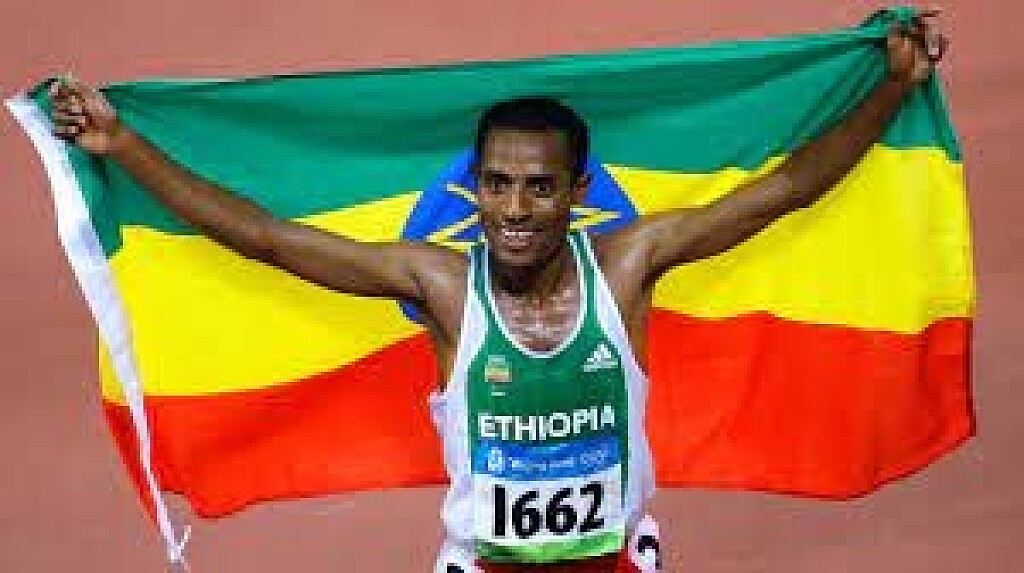Running News Daily
Top Ten Stories of the Week
7/16/2022
These are the top ten stories based on views over the last week.
Inspired by his dream of competing in the Boston Marathon, Bob Anderson started Distance Running News In 1966
Bob Anderson (publisher of My Best Runs) started Distance Running News in 1966, while he was still a high school student. Retitled Runner’s World in 1970, the magazine played a pivotal role in establishing running’s credentials as a legitimate sport.
Feature articles on training, diet, race tactics, and hotly contested reviews of running shoes delivered Runner’s World an audience in the millions, before the company was sold in 1984. Nearly 40 years later, Bob is still an exercise evangelist and a serial entrepreneur. Just don’t call him a jogger, he was only interested in racing!

ANDERSON HAS COMPETED IN NEARLY 1000 RACES
1. Why do you love running so much?
I love running simply because it gives me a lot of self-confidence. Plus you can run anyplace, anywhere, anytime — all you need is a good pair of shoes! It’s just you and your body in the fresh air. I also love that feeling when your heart’s pumping, things are clicking and you’re running as fast as you can. It’s an adrenaline rush. I’m 74 years old and I still run about 30 miles a week and walk another 30 miles. My little dog Daisy joins me for about half of this.
2. That is an amazing effort. Back in the early 70s, running wasn’t considered a sport in the way that football or baseball is, was it? How would you describe it?
Well, my dad, when he was in his 40s, wouldn’t have been caught dead in a pair of running shorts outside, it was just way too weird! I grew up in Kansas and ran cross-country and track in high school. But once the season ended, there was nothing, and college running was really only for superstars. People just didn’t run for fun and fitness. There were a few pockets of hardcore runners (like in San Franciso), and the Boston Marathon was around, but only a few hundred people entered races in those early years.
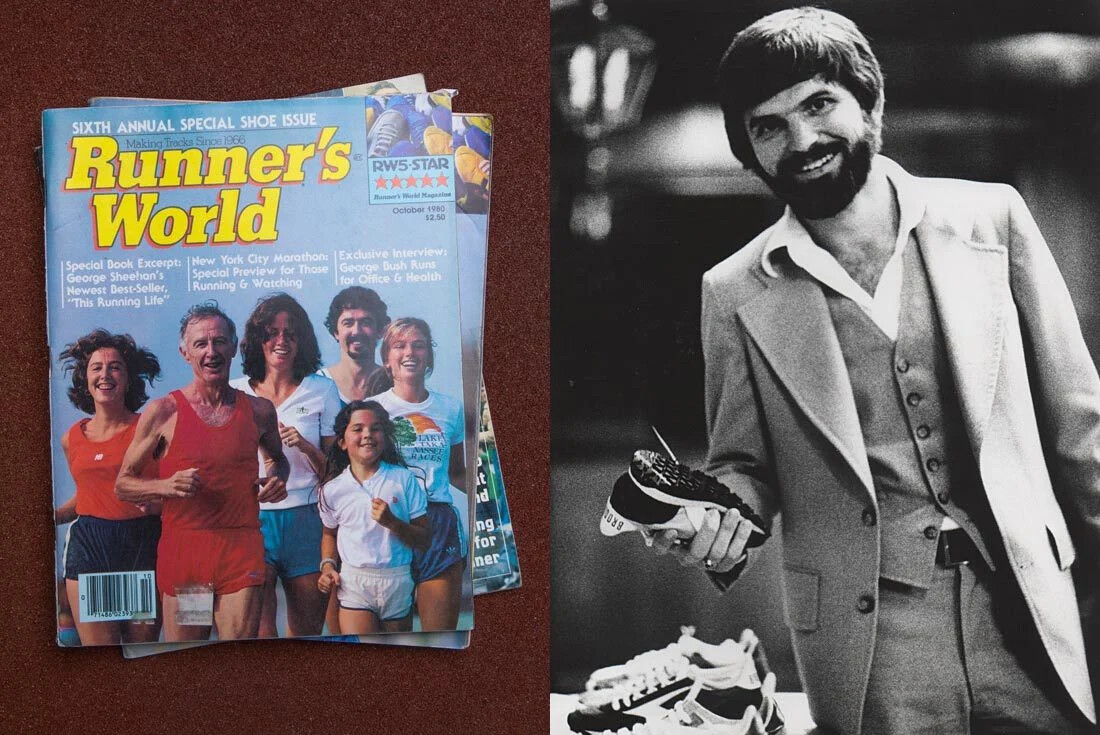
A STACK OF HISTORY
3. A lot of things conspired to create the jogging boom in the late 1970s. How did the marathon become a phenomenon?
I have to say one thing about jogging — I’ve never jogged a mile in my life! I run, and I run races! Anyway, what really helped put running on the map was when Dr. Kenneth Cooper came out with the book Aerobics. A few years earlier, President John F. Kennedy started the 50-mile hike challenge. Those two events really jumpstarted the running scene in America.
In January 1966, I published the first issue of Distance Running News. Even though I only printed a thousand copies, lots of people wanted to read it. The next thing I knew, people started sending in subscription money. New Balance was one of my first advertisers. I think they paid $10 for a little ad.
4. Bargain!
It started with two issues a year, then we went from four to six, then monthly. We went from black and white photos to colour. I started with a hundred bucks, and by the time I sold the magazine in 1984, we had 2,500,000 readers! We changed the name to Runner’s World in 1970, and the magazine became the Bible of running.
5. Did you have a grand plan for the business?
Not really. I was still in high school at the time! I was interested in running the Boston Marathon but had no idea how to train or go about it. I was reading every single word I could find about running, which wasn’t much. On the way to a cross-country meet one day I said to my best friend (Dave Zimmerman), "I want to start a magazine about running. We’ll call it Distance Running News!" He said great!
A YOUNG BOB BESIDE HIS HANDY WORK
6. It sounds like the magazine fostered a great sense of community.
Absolutely. You’re right, it was all about bringing people together, which is exactly what social media does for people today. A kid living in Cheyenne, Wyoming, who absolutely loved running, but was into it by himself, was suddenly able to find out what was happening in the world of running by reading the magazine.
We covered all sorts of topics, including articles on how to break through the pain barrier when you hit the wall at 20 miles, training information, dietary advice, running after 40, and women’s running. When I started Runner’s World, a woman was not allowed to run more than a half-mile.
7. Whoa! I have never heard that before.
I mean, it’s hard to believe that was the case, but a lot of people thought the female body was just not made to run beyond a half-mile. As far as I was concerned, people are people, and it didn’t matter if you were a man or a woman. I didn’t care if you were 10 years old or 75 years old — or even 100 years old! — the fact of the matter is running should be for everyone. I remember Kathy Switzer was thrown out of the Boston Marathon in 1967. It was crazy, but women were not allowed to run 26 miles at that time. That rule didn’t change until 1972. Anyway, those are the sorts of things we were dealing with in those early days, and we covered it all.
8. The athletic brands were also in their infancy during this period. Did you have any inkling how big brands like New Balance would become?
I wish I could say I did. [laughs] At the time, the sneaker companies were really small firms. New Balance was based up in the North East of the USA and other brands were dotted around America. To put things into perspective, back in those days, a best-selling running shoe maybe sold a thousand pairs. That’s how small the business of running was.
In 1968 I asked some experienced runners if 10,000 subscribers was possible. They told me that figure was just unbelievable and that I’d never reach it. Those people I talked to clearly thought I was just a kid with crazy dreams, but I didn’t start Runner’s World to make money — I just wanted to help the sport! In my mind that was a much bigger goal.
9. Well, I’d say you had the last laugh. Do you remember when your first running shoe edition was printed?
Oh yeah, our first shoe issue came out in 1967, and we reported on all the brands. As the years went on we did it annually, and it became the biggest issue of the year by far, with close to four million readers. We hired Peter Kavanaugh at Penn State University — who we paid $25,000 for equipment — and sent him all the shoes to test. We included feedback from readers in the results too. We would end up ranking the shoes starting with the number one running shoe of that year.
10. Sounds like a recipe for drama and intrigue.
Yeah, it was. [laughs] Because we rated a shoe number one, the controversy was never far away. Some brands felt we had too much power and … actually one company thought that we were being ‘influenced’ and decided to pull out of the shoe issue, thinking that their second place ranking should have been higher. Funnily enough, we sold more copies of that October shoe issue than we ever had because the controversy made the national news. We were fully investigated and cleared, of course, because we were doing nothing wrong. We just presented the facts as we saw them.
11. What are your memories of working with Jim Davis, president of New Balance?
First of all, Jim was very personable and he didn’t need to be in the limelight. He seemed like a really hardworking guy who really cared about running shoes and making the very best product that he could. I was very impressed, and you just got the feeling he was gonna make his brand work. He made and sold shoes in different width sizes, and he was willing to roll the dice on that. And here we are today, New Balance is a huge company. It’s a very impressive story.
(Jim Davis bought a small Boston Shoemaker in 1972 and turned it into a $3.6 billion New Balance company. Jim is the chairman of New Balance and his wife Anna joined the company in 1977 and is the vice chairman. Jim and Anna's net worth is estamated to be 4.6 billion dollars.)
12. You sold Runner’s World in 1984, by which time you had 300 employees…
We had 350 employees actually. [laughs] I was going through a divorce at that time and needed to sell the company. It’s funny, I started the magazine because I wanted to run the Boston Marathon, but I literally became a weekend runner only because my day was pretty full from six in the morning until eight at night. However, I was still able to run sub-six-minute miles in races on the weekend.
13. That’s quite ironic, isn’t it?
Yeah, it is. I wish I had followed my own advice. As I’ve gotten older, when I look back, my whole life was Runner’s World before the age of 35. Instead of taking off for an afternoon run, I just worked really hard. Luckily I’m still running 30 to 35 miles every week. I finally ran the Boston Marathon in 2013. It only took me 45 years to be on the starting line.
14. And was it as amazing as you thought it would be?
Oh my gosh, I’ve run close to a thousand races in my life but the Boston Marathon is number one. It was just an incredible experience and I was thrilled my wife and son Michael were with me that day. At the same time, that was also the year of the terrible bombing. Luckily I finished about a half hour before that happened. I ran 3:32:17 that day at age 65. I was proud of my time but it only gave me like 9th in my age division.
15. I didn’t connect that tragic year with the Boston race. That should have been a great day for you and a lot of other people.
Yeah, it was great, right up until the point the bomb went off. The experience of finally running through Boston and seeing the crowds was just beyond words. That doesn’t overshadow the victims and all the other people whose lives were destroyed that day, but the Boston Marathon is still an incredible race. What a tragic contrast to the joy that running brings.
16. One last question. You just can't stay away from being part of the running world!
I just love running and it will be part of my life until the end. I am the editor/publisher of our website My Best Runs. As of 2022 we have nearly one million unique readers annually. In 2010 I started a new sport called Double Racing and we established the Double Road Race Federation. The double is a two stage race. Our most popular disance is the Double 15k. We run 10K and then a 5k one hour and 45 minutes after the start of the 10k. Times are added together for scoring. In 2012 I ran 50 races over the course of a year covering 350.8 miles averaging 6:59/mile. A movie A Long Run the movie covers the event.
I also started the Kenyan Athletics Training Academy (KATA) in Thika Kenya (one hour outside of Nairobi) and officially opened it Sept 4, 2021. We currently have 13 Kenyan runners living and training there. We do a monthly 10K time Trial and we have had four of our runners already break 30 minutes. We have a lot of plans and have just started. I am working with an amazing team there who takes care of the day to day. Many have already told us we have one of the nicest if not the nicest "camp" in all of Kenya.
I love running and I love turning on as many people as I can to this amazing sport...Running and Racing!
(07/11/22) Views: 131Woody (Sneaker Freakers)
Mo Farah: I was smuggled into UK and this isn’t my real name
Multiple Olympic and world champion reveals in BBC documentary that he was trafficked under a false name as a child
The Home Office has confirmed it will not be taking any action against Mo Farah following revelations in a BBC documentary that he was smuggled into the country as a child under a false name. “No action whatsoever will be taken against Sir Mo and to suggest otherwise is wrong,” said a statement.
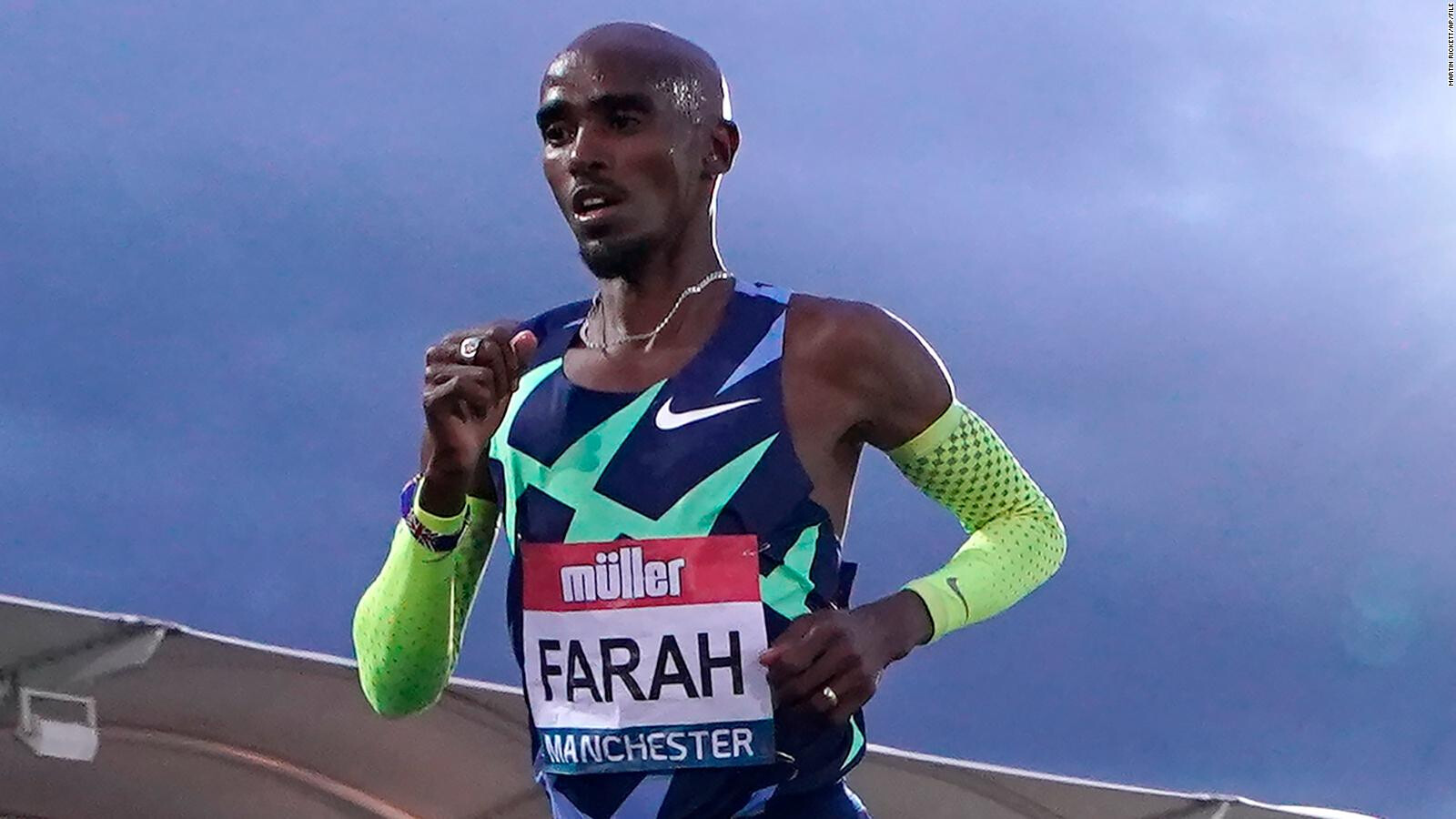
The BBC programme, which is called The Real Mo Farah and which airs on Wednesday night, tells the story of the athlete being originally called Hussein Abdi Kahin but being illegally trafficked into Britain using the name of another child.
He had previously claimed he had left Somalia aged eight to join his father, after his parents made the decision to send three of their six children to London for the chance of a better life.
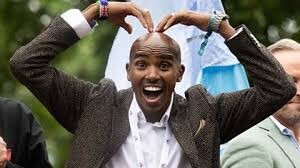
But in the BBC documentary the 39-year-old admits he was brought to London by a stranger under an assumed name.
“Most people know me as Mo Farah, but it’s not my name or it’s not the reality,” he says. “The real story is I was born in Somaliland, north of Somalia, as Hussein Abdi Kahin. Despite what I’ve said in the past, my parents never lived in the UK.”
In the programme he adds: “When I was four my dad was killed in the civil war, you know as a family we were torn apart. I was separated from my mother, and I was brought into the UK illegally under the name of another child called Mohamed Farah.”
Farah said he and his twin, Hassan, were sent by their mother to live with an uncle in neighbouring Djibouti and that he would be taken to Europe and renamed Mohamed. “As a kid, you never think beyond what you’ve been told,” he says.
But on arriving in England, he says: “I had all the contact details for my relative and once we got to her house, the lady took it off me and right in front of me ripped them up and put it in the bin, and at that moment I knew I was in trouble.”
After London 2012 he brought out an autobiography that talked about growing up in Djibouti near the border with Somalia but he has now decided to talk about something which has always been buried in his past.
“I’ve been keeping it for so long, it’s been difficult because you don’t want to face it and often my kids ask questions, ‘Dad, how come this?’ And you’ve always got an answer for everything, but you haven’t got an answer for that.”
In the documentary, Farah says he has concerns about his immigration status. But the Home Office has confirmed that he would not face any repercussions. “No action whatsoever will be taken against Sir Mo and to suggest otherwise is wrong,” a spokesperson said.
The documentary, which was a year in the making, ends with Farah speaking to the real Mohamed Farah, whose identity he took entering the UK, before adding Farah will continue to go by the name he was given when he entered the UK. There have also been unsuccessful attempts to speak to the woman who trafficked Farah to England.
The story has received widespread coverage, featuring on many of the front pages of British newspapers on Tuesday. Among the many people to comment, Mayor of London, Sadiq Khan, said: “Everything Sir Mo has survived proves he’s not only one of our greatest Olympians but a truly great Briton. Thank you for sharing your story and shining a spotlight on these awful crimes. We must build a future where these tragic events are never repeated.”
(07/12/22) Views: 109Athletics Weekly
Eliud Kipchoge picks his next marathon he will be racing the Berlin Marathon for a fifth time on Sept. 25
Eliud Kipchoge will race the Berlin Marathon for a fifth time on Sept. 25, returning to the German capital event for the first time since he broke the world record there in 2018.
“Berlin is the fastest course, it’s where a human being can showcase its potential to push the limits,” he said in a press release.

Kipchoge has the greatest marathon record of any man, winning 14 of his 16 starts and becoming the first and so far only person to run 26.2 miles in under two hours (doing so in a non-record-eligible event).
Kipchoge, 37, chose Berlin over London, his other usual marathon, and the other fall major marathons, Chicago (which he raced once in 2014) and New York City (which he has never raced).
London, usually in April, will be held in the fall for a third consecutive year due to the pandemic before returning to its spring date in 2023.
Kipchoge called it a “really hard” decision to go with Berlin over the others, speaking in a virtual press conference from training in Kaptagat in his native Kenya.
Kipchoge has said that he hopes to run all of the World Marathon Majors, which would require making his debuts in Boston, which is contested every April, and New York City, which is in November.
So far, Kipchoge has primarily run London every April and Berlin every September, never doing more than two marathons in a year.
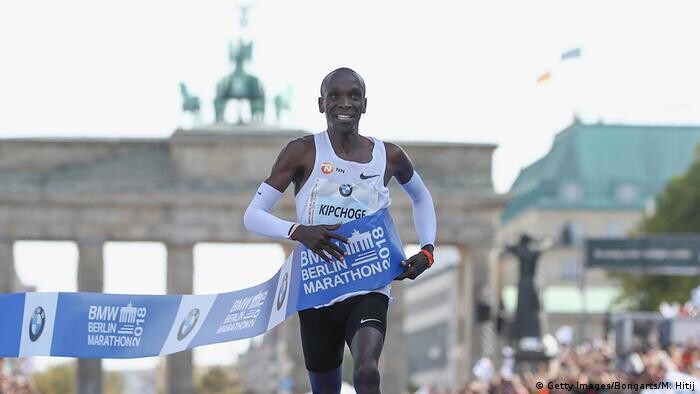
He said Friday that Boston and New York City remain targets, and when asked specifically about Boston, said it was on his bucket list.
Kipchoge is expected to race the 2024 Paris Olympics, where he could become the first marathoner to win three gold medals (or three medals of any color).
He has never raced a fall marathon in an Olympic year, so if he doesn’t race New York City in 2023, he may not do so until, at the earliest, 2025, when he will be three days she of turning 41 years old.
Kipchoge said Friday he may continue racing after the 2024 Olympics and into his 40s. He plans to focus on major city marathons rather than specialty races, such as his 2017 and 2019 attempts to break two hours for a marathon in non-record-eligible events.
He ran 2:00:25 on a Formula One track in Italy in 2017 and 1:59:40 in Vienna in 2019.
In Berlin, he has three victories and a runner-up. In 2018, he broke countryman Dennis Kimetto‘s world record, lowering it from 2:02:57 to 2:01.39. The next year, Ethiopian legend Kenenisa Bekele won Berlin in 2:01:41 with Kipchoge not in the field.
Kipchoge and Bekele, 40, have not gone head-to-head since then. Bekele, who hasn’t broken 2:06 since Berlin 2019, signed up for London on Oct. 2.
The other headliner in Berlin is defending champion Guye Adola of Ethiopia.
In 2017 in Berlin, an unknown Adola came out of nowhere to finish 14 seconds behind Kipchoge in the then-fastest-ever marathon debut on a record-eligible course, sticking with Kipchoge until the last mile. Adola didn’t know he was running until four days before the race and wasn’t meant to start with the elite group.
Adola said he hopes to break 2:03 this year.
(07/08/22) Views: 99OlympicTalk
Ethiopia Has Changed Its Team Again for the 2022 Worlds
On Tuesday, the Ethiopian Athletics Federation announced its team for the 2022 World Athletics Championships in Eugene. If this sounds familiar, that’s because Ethiopia already named its team on June 13…and then updated it four days later to sub in Dawit Seyaum after she ran 14:25 to win the Oslo Diamond League.
Tuesday’s list — which the federation says is the final roster (it pretty much has to be, since entries were due to World Athletics on Monday) — features even more changes, which will have a major impact on Worlds, which begin on July 15 at Hayward Field. Remember, at World Indoor Championships earlier this year in Belgrade, Ethiopian athletes won eight of the 12 available medals across the 1500 and 3000 meters — including all four golds and a 1-2-3 sweep in the women’s 1500. The country is a distance powerhouse.
Here is the full roster, with changes, followed by some analysis on what it all means.
Men’s 800 (no changes)Ermiyas GirmaTolosa Bodena

Women’s 800Habitam AlemuDiribe WeltejiHirut Meshesha (1:58.54 sb) replacing Freweyni Hailu (1:59.39 sb)
Men’s 1500Samuel TeferaTaddese Lemi (3:37.06 sb) replacing Melese Nberet (no races this year)Samuel Abate
Women’s 1500Gudaf Tsegay (3:54.21 sb) replacing Axumawit Embaye (3:58.80 sb)Freweyni Hailu (3:58.18 sb, 4th in Olympics) replacing Ayal Dagnachew (3:59.87 sb)Hirut Meshesha

Men’s 3000 steeple (no changes)Lamecha GirmaHailemariyam AmareGetnet Wale
Women’s 3000 steepleMekides AbebeWorkua GetachewSimbo Alemayehu (9:09.17 sb at age 18) replacing Zerfe Wondemagegn (9:27.75 sb)
Men’s 5,000Muktar EdrisBerihu AregawiYomif KejelchaSelemon Barega replacing Telahun Bekele
Women’s 5,000Ejgayehu TayeLetesenbet Gidey (14:24.59 sb) replacing Gudaf Tsegay (14:26.69 sb)Dawit Seyaum (14:25.84 sb) replacing Fantu Worku (14:47.37 sb)
Men’s 10,000Selemon BaregaTadese WorkuBerihu Aregawi (26:46.13 sb) replacing Milkesa Mengesha (27:00.24 sb)
Women’s 10,000Letesenbet GideyEjgayehu Taye (30:44.68 sb) replacing Girmawit Gebrzihair (30:47.72 sb)Bosena Mulate
Men’s marathonLelisa DesisaTamirat TolaMosinet GeremewSeifu Tura
Women’s marathonGotytom GebreslaseAbabel YeshanehAshete Bekere
Quick Takes
1) Ethiopia’s team just got A LOT stronger and Ethiopia went from no one doubling to a lot of doublers
In recent years, Ethiopia has been reluctant to allow its stars to double at global championships. Last year in Tokyo, Ethiopia had two huge 5,000m medal threats in Selemon Barega (Olympic 10,000 champ) and Berihu Aregawi (the 10,000 4th placer who would go on to win the Diamond League 5,000 title) but neglected to enter either in the 5,000 meters. Of the three men Ethiopia did enter, two failed to even make the final and the third, Milkesa Mengesha, wound up 10th.
The federation took criticism after that misstep and it looked as if it would double down in 2022 as the initial team named in June featured no doublers. But the final squad features five athletes double-entered: World Indoor bronze medalist Hirut Meshesha (800/1500) and Ejgayehu Taye (14:12 pb, #5 woman all-time), Letesenbet Gidey (women’s 5k/10k world record holder), Barega and Aregawi, all of whom are running the 5,000 and 10,000.
2) The meet is more interesting with the Ethiopians doubling; the men’s 5,000 final is now totally stacked
The World Championships are meant to be about the best against the best. When a world final is over, we don’t want to be asking ourselves, “What would have happened if Athlete X was in the race?” But that’s absolutely what we were thinking after the 2021 Olympic 5000 final without Barega. And it’s been an issue for a lot longer than that. Only once in his career did Haile Gebrselassie attempt the 5,000/10,000 double at a global champs (1993), in part because there were still prelims in the 10,000 in those days and in part because he didn’t want to tire himself for the lucrative post-championship meets in Europe.
That shouldn’t be an issue in 2022 (and if it is, it won’t have been the fault of the Ethiopian federation) as the distance finals are much stronger with Taye, Gidey, Barega, and Aregawi doubling up. The men’s 5,000 could be an all-timer. Not only do you have Olympic 5,000 champion Joshua Cheptegei of Uganda, but now we have Olympic 10,000 champ Barega stepping down and Olympic 1500 champion Jakob Ingebrigtsen stepping up. It’s reminiscent of one of the most famous races in track history, the 2003 World Championship 5,000 final in Paris which featured Hicham El Guerrouj stepping up from the 1500 and Kenenisa Bekele stepping down from the 10,000 only for both of them to be defeated by an 18-year-old Eliud Kipchoge.
Having Aregawi in the 10,000 makes for a stronger race as well as he was 3rd at the Ethiopian trials in that event and set a Diamond League record for margin for victory when he ran 12:50 to win the Pre Classic 5,000 by 16 seconds.
3) Gudaf Tsegay’s medal odds went up but her gold medal odds went down
Tsegay is pretty clearly the #2 women’s 1500 runner in the world. She won World Indoors by 5+ seconds and is 3+ seconds faster than the #3 1500 woman in the world right now. But she’s also not close to double Olympic champ Faith Kipyegon, who beat her convincingly at Pre, 3:52.59 to 3:54.21.
Initially, Tsegay was entered in the 5,000 at Worlds (she ran the 5,000 only at the Olympics last year, earning the bronze medal) and while there’s no overwhelming favorite in that event like Kipyegon (well at least until we see how Sifan Hassan looks this weekend), Tsegay is not as good at the 5,000 as the 1500 (as evidenced by her defeat to countrywoman Dawit Seyaum in the 5,000 in Oslo). By running the 1500, Tsegay has a better shot at a medal but her odds at gold are worse.
4) It just got a WHOLE LOT harder for the Americans to medal
An American medal in the women’s 5,000 or 10,000 was already unlikely, so the Ethiopian roster changes didn’t make a huge impact on the chances of Karissa Schweizer or Elise Cranny. But the medal odds of Grant Fisher, who finished 5th in the Olympic 10,000 last year, are way lower today than they were a week ago (a statement also true for his US teammates Woody Kincaid and Joe Klecker).
Last Wednesday, two of the four men who finished ahead of Fisher in the 10,000 in Tokyo were major question marks. Bronze medalist Jacob Kiplimo hadn’t raced on the track all year, while Aregawi, the 4th placer, was named to Ethiopia’s team in the 5,000 only. Since then, Kiplimo ran 7:29 for 3,000 in Stockholm to show he’s very fit right now and Aregawi was added to Ethiopia’s 10,000 squad. Plus Barega was added to the 5,000.
Those developments will make it significantly harder for Fisher (or any American man in the 5,000 or 10,000) to earn a medal. That said, if an American can somehow medal, it will go down as a monumental achievement since no one can accuse these fields of being watered down.
Sinclaire Johnson‘s medal hopes in the 1500 also took a BIG hit. With Tsegay now in the 1500, two medals seem to be spoken for and new addition Freweyni Hailu, who was 4th in the Olympics last year at age 20, is better than Ayal Dagnachew (who is no slouch herself, world junior 800 champ last year and 3:59 this year).
5) Ethiopia needs to figure out a better way to do this
One of the most important jobs an athletics federation has is selecting national teams. And for countries that don’t use a “top 3 at the trials” model — which is to say, every country except for the US — things can get prickly as someone, inevitably, is going to be upset they’re missing out on the team.
There are ways to limit the outrage. The simplest solution is the one USATF has already discovered: hold a trials and just pick the top three finishers. Ethiopia actually did this ahead of the Olympics last year. The problem was, they held all the races on the same day, making it impossible for athletes to try out for both the 5,000 and 10,000 teams.
But even if you don’t want to stage a trials, a federation can avoid much of the backlash by announcing a clear criteria ahead of time and sticking to it. You want to pick the team based off season’s bests? Fine. Just let everyone know before the season starts and let them plan their races accordingly. Transparency and consistency are the keys.
Heck, even if you want to be subjective and use a selection panel, you can at least cut down on some of the drama by letting the athletes know in advance that they’ll have to run a few performances to impress the selectors.
What you don’t want to do is announce a team well before the entry deadline (and three days before two key Diamond League meets featuring most of your athletes) only to drastically change it three weeks later. Which is exactly what happened in Ethiopia, leaving athletes like Telahun Bekele (winner of the 5,000 in Oslo) to think they’re on the team only to yank it away less than a month later.
In the end, Ethiopia ended up picking the team by season’s best except in the 10,000, where it staged a trial race (and the top 3 there were the fastest 3 on the year). If it had just used that criteria throughout the year and stuck to it, there would be fewer angry people right now. The athletes deserve better.
(07/08/22) Views: 99Jonathan Gault
Here’s how to run faster just by thinking about it
Mental imagery for running performance has been used by elite athletes for decades and is simple enough for the regular runner to start trying tonight. You’ll give your brain a workout along with preparing yourself for your event. Ultrarunner and author of Mental Training for Ultrarunners, Addy Bracy, explains: “thinking about a specific exercise produces the same brain activity that occurs when the actual task is performed.” Here’s how to get started.
Repetition
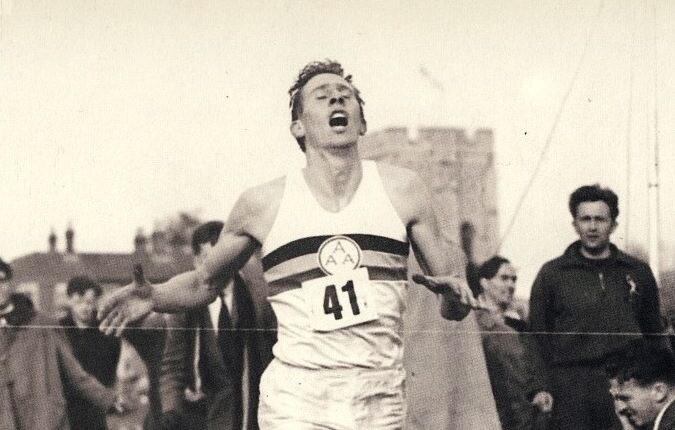
Sir Roger Bannister, the first man to run a 4-minute mile, used visualization techniques to get ready to tackle that famous distance. “Each night in the week before the race there came a moment when I saw myself at the starting line. My whole body would go nervous and tremble. I ran the race over in my mind. Then I would calm myself and sometimes go off to sleep” he wrote. If you’re familiar with the course or area that you’re going to run in, visualize yourself making your way through the course in your mind. If you’re training for a longer race, choose portions of it to run through. When you actually run the race it will feel familiar and comfortable. Try to incorporate as many of the five senses as possible: envision what you’re feeling in your body, what the air smells like, and notice the sights around you–you may feel silly doing this at first, but know that you’re training your brain to help you be a faster runner.
Visualize working through obstacles

Remember a time when you encountered something challenging in a race, whether it was discouraging thoughts, heavy legs or nausea. Imagine yourself working through that issue during your race with ease and finesse. Try this with a variety of obstacles. When you run into similar issues, your brain won’t react with shock and overwhelm; ideally, it will remember your mental practice and you’ll move fluidly through any problems. “Once you have identified possible stressors, see and feel yourself using your tools to calm your anxiety,” Bracy says. The more diverse the situations you work through in your brain, the more prepared you’ll actually be on race day.
Imagine a strong race finish
Research suggests that our brain becomes fatigued and starts signaling us to stop running in the final quarter of a race. Spend more time focusing on this last section, and envision yourself tuning out any mental chatter to stride strongly towards that finish line. Bracy suggests linking together images of several past successes, “making sure to include the emotions and feelings you derived from those experiences. Use this to enhance feelings of confidence, belief and excitement leading into a race.” The brain is a powerful tool, and adding some brain training techniques to your regime will help you on race day.
(07/08/22) Views: 95Running Magazine
The Dibaba family of Ethiopia dominated the women’s long-distance running for decades
The Dibaba Sisters, from Ethopia, is the fastest family on earth.
Ethiopian distance runner Tirunesh Dibaba made history at the 2008 Beijing Olympics when she became the first woman to win gold in both the 5,000-metre and 10,000-metre races. She defended her gold medal title in the 10,000 metres at the 2012 London Olympics, becoming the first woman to win the event at two consecutive Olympics.
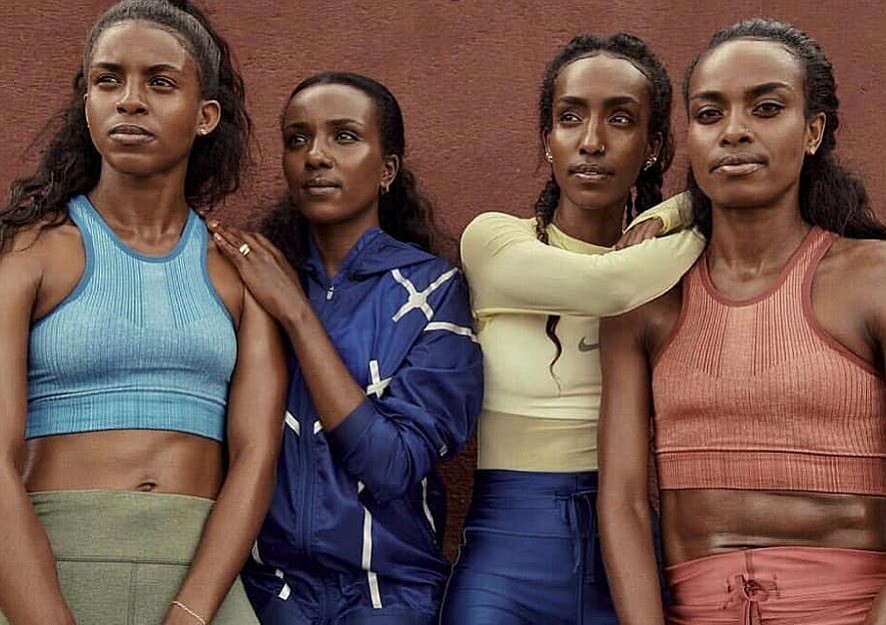
She was inspired by a family of runners. In fact, she and her sisters have been amazing in the field of distance running. The Dibaba sisters — Tirunesh, Genzebe, Anna, and Melat — are the only siblings in recorded history to hold concurrent world records, and they are a fiercely competitive family from a humble background.
Their parents, Gutu Tola and Dibaba Kaneni, were not athletes themselves but their children have always acknowledged the support that their parents have given them to thrive in athletics.
Her baby-like face combined with her track performance gave her the perfectly fitting nickname ‘The Baby Faced Destroyer’.

Fourth born in a family of six, Tirunesh started running with a clear focus on becoming a professional athlete at the tender age of 14.
Her sister, Ejegayehu Dibaba was already a professional athlete, and her cousin, Derartu Tulu, also helped inspire to take up athletics.
Moving to the Ethiopian capital of Addis Ababa in 2000, the year her cousin Ejegayu had won her second Olympic gold during the Sydney Olympics in the 10,000-meter race, Tirunesh moved in to live with Ejegayu launching her athletic career.
Just over two years later, in 2003, Tirunesh would win her first international medal by scooping gold in the 5000 metres during the IAAF World Track & Field Championships.
A year later, Tirunesh competed in the Olympics winning the bronze medal finishing behind teammate Meseret Defar and Kenya’s Isabela Ochichi.
From there Tirunesh went on to establish herself as one of the greatest ever long-distance woman runners of all time becoming the youngest female World Champion in the history of athletics. She has gone on to win three Olympic gold medals.
In her highly decorated career, Tirunesh boasts of three Olympic gold medals and three bronze along with five World Championship gold and one silver. Additionally, she has four World Cross Country Championships 4 gold medals, and 2 silver, and has won two African Championships gold and one silver medal.
In total, ‘The Baby Faced Destroyer’ has 14 gold medals, four silver, and three bronze medals from all major global athletics events.
The biggest reason behind her success has been the blistering speed that she used in the final laps leaving the competition in her wake.
Now 37 years old, Tirunesh has informally retired as one of the greatest track and field athletes of all time. She has won everything and set records that will take a while before they are broken.
Ejegayehu Dibaba
Ejegayehu is the eldest of the Tirunesh’s and just like her younger sister she has also carried the Dibaba’s flag high and to the top.
Winner of the 10,000m silver medal in the 2004 Athens Olympics, Ejegayehu finished ahead of her cousin Derartu Tulu who took the bronze.
Other medals from major internationals include two World Championships bronze in Helsinki 2005 in the 5000m and 10,000m.
She also went on to surprise the world by winning her debut marathon in Chicago in 2011.
Genzebe Dibaba
Genzebe is the youngest of the family and has also tasted the sweetness of winning an Olympic medal. Her moment of glory in the Olympics came in the 2016 Rio Olympics winning silver in the 1500m race.
In total Genzebe won a total of 11 gold medals, five silver medals, and two bronze medals in her athletic career.
Derartu Tulu
Cousin of the three sisters, Derartu Tulu's exploits were an inspiration to the Dibabas setting the pace for her cousins by concurring the world.
Tulu became the first Black African woman to win an Olympic gold medal winning the 10,000m race at the 1992 Barcelona Olympics.
Eight years later she would win her second Olympic gold at the 2000 Sydney Olympics.
She would have an incredible achievement winning a medal in three different Olympics winning a bronze at the 2004 Athens Olympics in the 10,000m.
Other major titles in her illustrious career include 10,000m gold and silver medal at World Athletics Championships in Gothenburg 1995 and Edmonton 2001.
Sileshi Sihine
Sileshi Sihime is a two-time Olympic silver medalist with over a dozen major athletics medals under his belt. Married to Tirunesh Dibaba, he is a three-time Olympic gold medalist.
Conclusion
In terms of ‘Sports Dynasties’, the Dibabas are the 'African Sports Dynasty’. Talent, hard work, and dedication are clearly what enabled the Dibabas to conquer the world of women's long-distance races for decades.
(07/09/22) Views: 92World Athletics Championships Oregon22 preview: marathon
Kenya’s Geoffrey Kamworor, whose career was traumatized in June 2020 when he was hit by a motorbike during a training run and required surgery on a broken tibia, is due to contest his first major championship marathon in Eugene on July 17.
The 29-year-old from Nyen was named on the Kenyan team for the World Athletics Championships Oregon22 along with 33-year-old Lawrence Cherono – who missed a medal by one place in the marathon at last year’s Olympics – and 35-year-old Barnabas Kiptum.
Kamworor, confident and outgoing, was flying high when he had his accident.
Although he had performed to high levels on the track, where he earned 10,000m silver at the 2015 World Championships in Beijing, it was on grass and roads that he had excelled, winning the world cross-country senior titles in 2015 and 2017, and world half marathon titles in 2014, 2016 and 2018.
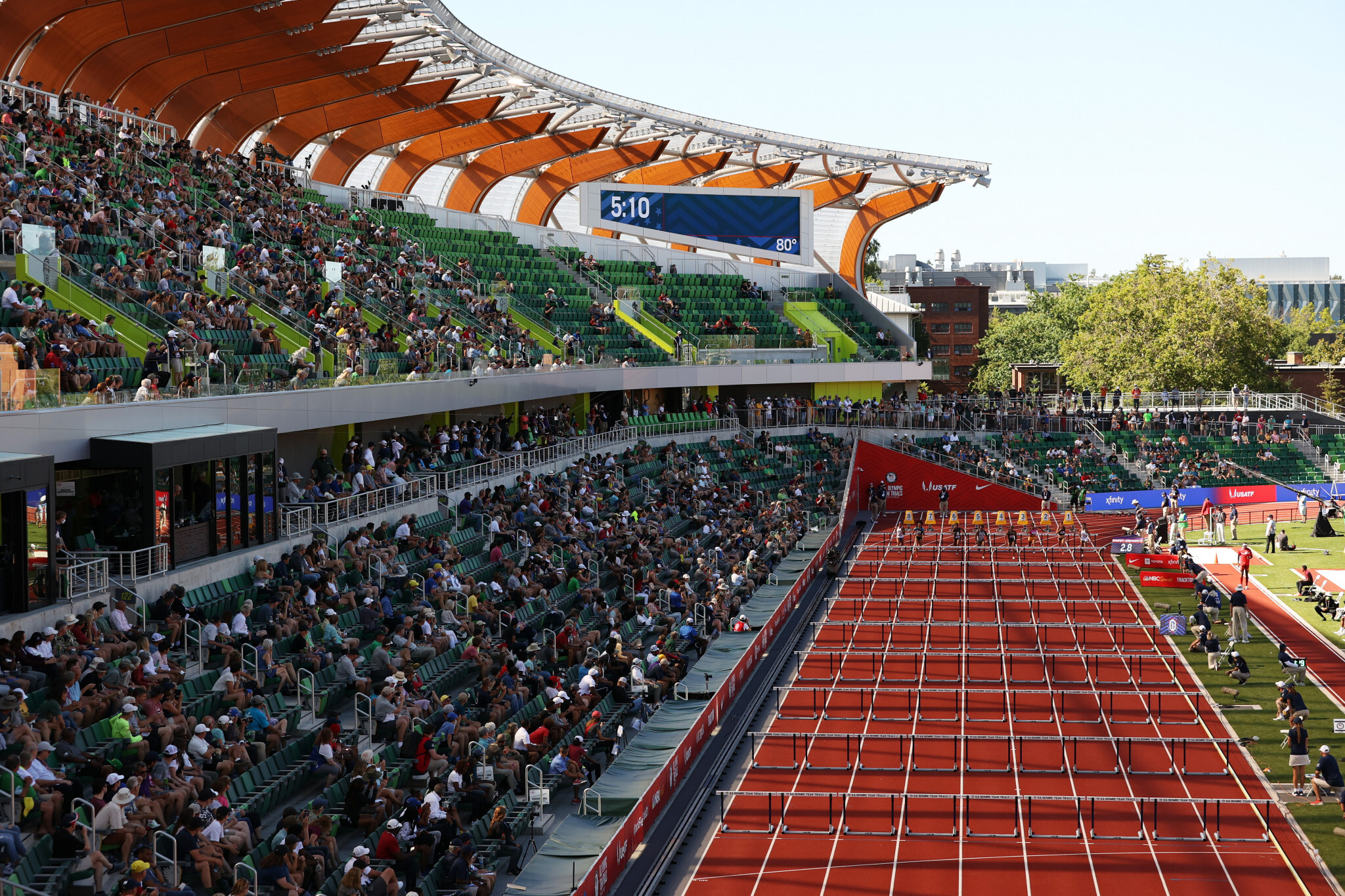
In his first competitive marathon in 2012 he finished third in Berlin in 2:06:12, and he was a consistent presence on the podium at World Majors Marathons thereafter, particularly in New York, where he finished second in 2015, first in 2017, third in 2018 and first again in 2019.
Kamworor ran his first race since the accident in January 2021, winning the Kenyan Police Cross Country Championships before going on to secure a place on Kenya’s Olympic 10,000m team after winning the national trials, only to have to pull out with an ankle injury.
But at the Valencia Marathon last December he was able to perform to the peak of his ability once more as he set a personal best of 2:05:23 in finishing fourth.

At the previous year’s running in Valencia, Cherono was second in a personal best of 2:03:04, putting him eighth on the world all-time list, having made his World Marathon Majors breakthrough in 2019 when he won in Boston in 2:07:57 and then Chicago in 2:05:45.
Like Kamworor, Kiptum also set a personal best last year as he clocked 2:04:17 in placing third at the Milan Marathon and he has a solid top-three record in virtually every race he has contested.
Such is the depth of Kenyan talent that they can name 2017 world champion Geoffrey Kirui as a reserve.
Meanwhile Kenya’s perennial rivals Ethiopia will be looking to their current world champion Lelisa Desisa, who found the way to win in the steamy heat of Doha three years ago, to make the most of his wild card entry to this year’s competition.
Desisa had early track success, winning the African U20 10,000m title in 2009, and he has since become a highly consistent performer at the highest level, achieving podium finishes four times in New York, including victory in 2018, and four times in Boston, where he won in 2013 and 2015.
He also has championship pedigree, having earned world silver in 2013 six years before his Doha gold, and has a personal best from 2013 of 2:04:45.
The formidable talent Ethiopia can call upon was made clear when it was confirmed that Desisa will have as teammates Tamirat Tola, Mosinet Geremew and Seifa Tura.
Tola earned Olympic 10,000m bronze in 2016 and world marathon silver in 2017. He set his personal best of 2:03:38 last year.
Geremew took silver behind Desisa at the 2019 World Championships, having finished second at that year’s London Marathon in 2:02:55, the third-fastest time in history.
Tura set his personal best of 2:04:29 last year in Milan before going on to win the Chicago Marathon in 2:06:12.
Uganda, the rising nation in distance running, earned this title in 2013 thanks to their 2012 Olympic champion Stephen Kiprotich. But the 33-year-old hasn’t been selected for Oregon, nor have Stephen Kissa, who ran a national record of 2:04:48 in Hamburg earlier this year, and Victor Kiplangat who was third in the second-fastest time ever by a Ugandan, 2:05:09.
Instead, Filex Chemonges, Fred Musobo and Jackson Kiprop will run the World Championships marathon, according to the Uganda Athletics Federation. So Kiprop, who helped Kiprotich to win the 2013 world title, is back at the World Championships for the first time since 2015.
Kissa, meanwhile, is due to be in Oregon in the 10,000m, where he will run with fellow Ugandan Joshua Cheptegei, the world 5000m and 10,000m record-holder, while Kiplangat is reported to be running the Commonwealth Games marathon.
Abdi Nageeye of the Netherlands and Belgium’s Bashir Abdi earned surprise silver and bronze medals respectively at the Olympics last year, but went on to confirm that their performance in Sapporo was anything but a fluke. Abdi set a European record of 2:03:36 to win the Rotterdam Marathon just two months later, while Nageeye was victorious at the Rotterdam Marathon earlier this year in a Dutch record of 2:04:56, finishing ahead of Abdi.
Both men will line up for the marathon in Oregon, only this time it will be less of a surprise if they reach the podium.
The United States will be looking to the highly consistent figure of Galen Rupp. After taking Olympic 10,000m silver in 2012, Rupp moved to the roads and earned Olympic bronze in 2016.
In 2017 he became the first US man to win the Chicago Marathon since 2002 and finished second at the Boston Marathon. He qualified for Oregon by finishing eighth at last year’s Olympics.
The championships will be in Rupp’s home state, in the same city where he made his first Olympic team in 2008 while he was a student at the University of Oregon.
The other US selections are Elkanah Kibet and Colin Mickow. Kibet, who is with the US military, finished 16th at the 2017 World Championships and set a personal best of 2:11:15 in finishing fourth at last year’s New York marathon.
Mickow is a 32-year-old full-time financial analyst for an organic and natural foods distributor who took up road running six years after finishing his college track career. He qualified for his first international vest after being the top US man home at last year’s Chicago Marathon, where he was sixth in 2:13:31.
Japan’s trio of male runners will be headed by Kengo Suzuki, who set a national record of 2:04:56 in February 2021 at the Lake Biwa marathon in Otsu. Daniel Do Nascimento of Brazil has run a 2:04:51 personal best this year and is another one to watch.
The three-loop World Athletics Championships marathon course only varies by about seven meters between its high and low points and the weather is likely to be considerably cooler than it was in Sapporo or Doha, where the men's marathon had to be held at midnight and the start time temperature was 29C/84F with 51% humidity.
Women's marathon
Ruth Chepngetich will defend her marathon title at the World Athletics Championships Oregon22 on July 18 by virtue of a wild card.
Chepngetich claimed the first gold medal of the 2019 World Championships, clocking 2:32:43 in the steamy heat to gain her first major gold.
She went on to finish third at the 2020 London Marathon before a roller coaster 2021, when she set a world record of 1:04:02 at the Istanbul Half Marathon, failed to finish the Tokyo 2020 Marathon in Sapporo but then won the Chicago Marathon.
At this year’s Nagoya Women's Marathon she won in 2:17:18, just 10 seconds off her personal best and the second-fastest ever women-only marathon.
She will be joined on the Kenyan team in Oregon by Judith Jeptum and Angela Tanui. Jeptum set a French all-comers’ record of 2:19:48 to win the Paris Marathon this year, while Tanui won the 2021 Amsterdam Marathon in 2:17:57.
Ethiopia will be represented by Gotytom Gebreslase, who won the 2021 Berlin Marathon on her debut and finished third in this year’s Tokyo Marathon in 2:18:18, Ababel Yeshaneh, second at the 2019 Chicago Marathon in a personal best of 2:20:51, and Ashete Bekere, third in last year’s London Marathon in 2:18:18, who has run 2:17:58 this year.
USA’s Keira D’Amato, who broke the North American record when winning January’s Houston Marathon in 2:19:12 – taking 24 seconds off the mark set by Deena Kastor in 2006 – has answered a late call to join the host nation’s team following the withdrawal of Olympic bronze medalist Molly Seidel.
Seidel has been suffering from a hip injury that forced her to drop out of the Boston Marathon in April and withdrew from the team after being unable to resolve her issue, giving the 37-year-old D’Amato, who only began serious marathon running in 2017, three weeks to prepare, but she is reported to be in “great shape”.
Her teammates will be Emma Bates, runner-up at last year’s Chicago Marathon, and Sara Hall, who finished second at the 2020 London Marathon and third at last year’s Chicago Marathon.
Japan has named Mizuki Matsuda, who has a personal best of 2:20:52, Mao Ichiyama, who has run 2:21:02, and Hitomi Niiya, who has a best of 2:21:17.
Britain will be represented by Rose Harvey, Olympian Jess Piasecki and Charlotte Purdue, who ran a personal best of 2:23:26 in finishing 10th at last year’s London Marathon.
Other names to watch out for are Bahrain’s Eunice Chumba, who ran 2:20:02 in Seoul in April this year, and Israel’s European 10,000m champion Lonah Salpeter, who won the 2020 Tokyo Marathon in 2:17:45 and was going well in the lead group at last year’s Olympic marathon before dropping down to 66th place in the closing stages.
After also dropping out of the 2019 World Championships marathon, Salpeter will be seeking to make the global impact her talent warrants.
Meanwhile Eritrea’s Nazret Weldu, who has run a personal best of 2:21:56 this year, is another one to watch.
(07/11/22) Views: 92World Athletics
Jemal Yimer and Rosemary Wanjiru take wins at Utica Boilermaker
Jemal Yimer Mekonnen of Ethiopia won the 45th running of the Boilermaker 15K Road Race presented by Excellus BlueCross Blue Shield, smashing a 12-year-old course record by 8 seconds in the race's return to its traditional first Sunday in July. Rosemary Wanjiru of Kenya took home the women's crown and a $10,000 Super Bonus as part of the Professional Road Racing (PRRO) 25th Championship.
Mekonnen won the 9.3 mile race with a time of 42:38, overtaking Edwin Kimutai of Kenya in the final mile and taking the win by 2 seconds. Mekonnen took home $7000 for winning the Boilermaker and a $2500 bonus for winning the PRRO Championship. He was not eligible for the PRRO Super Bonus, which requires a win in a previous series race.
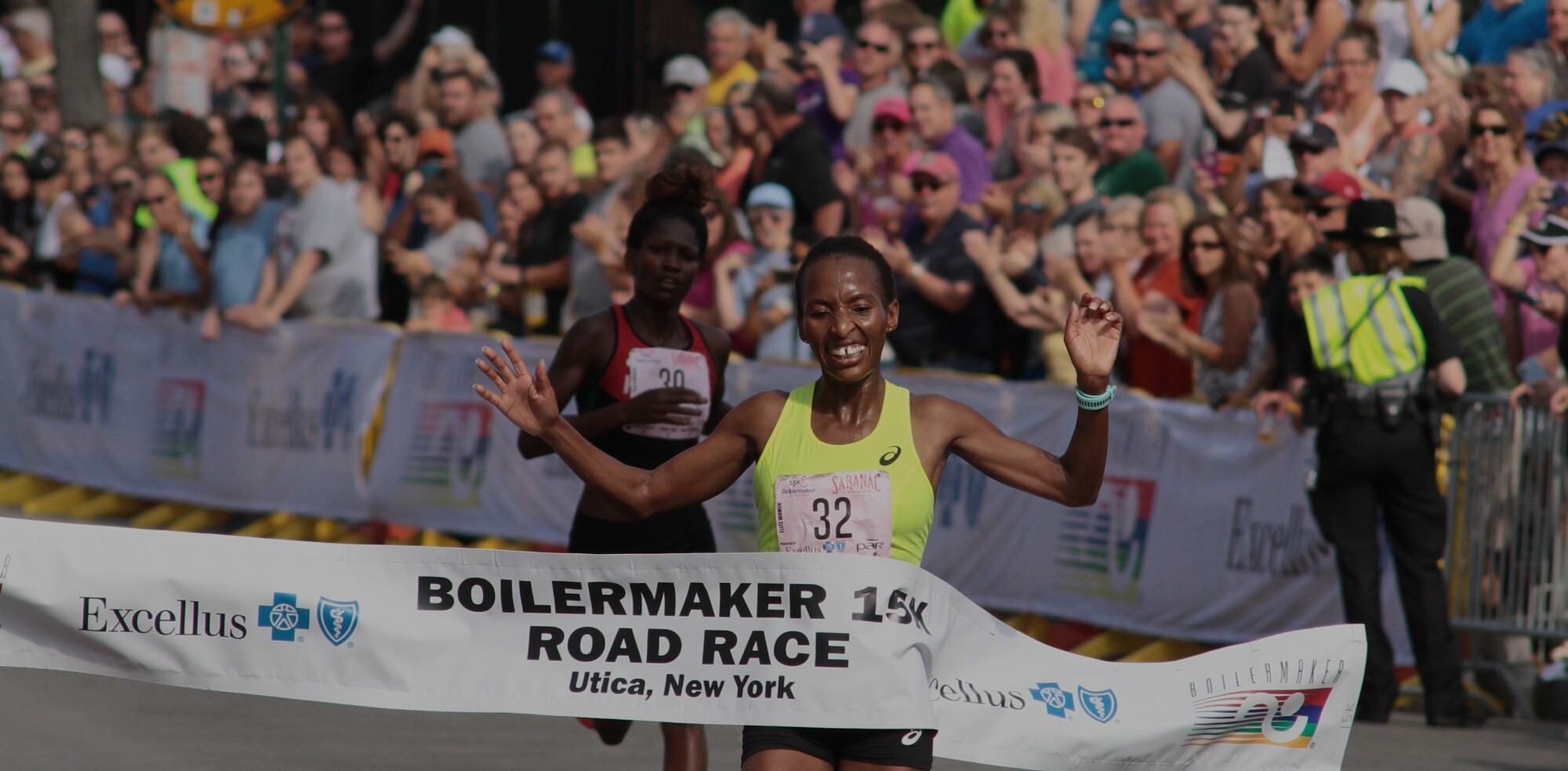
Mekonnen bested the Men's Open record of 42:46 set by Lelisa Desisa of Ethiopia in 2010.
Wanjiru, who previously won the Bloomsday Run in 2019, bested fellow-Kenyan Veronica Nyaru Wanj by nearly 20 seconds, finishing the race in 48:54. The women's course record is held by Edna Kiplagat of Kenya, who won the 2010 race with a time of 47:57.

Wanjiru leaves the race as the PRRO Series Champion, winning $7000 from the Boilermaker in addition to the super bonus prize money from PRRO.
Sam Chelanga of Columbia, SC, the top American male, finished third overall with a time of 43:09, while the top American woman was Carrie Verdon of Boulder, CO. Verdon was the fifth overall female, finishing in 49:37.
As part of the PRRO Championship, runners who were eligible for the PRRO Super Bonus who finish in positions 2-10 in the men's and women's open divisions receive a $1500 bonus. On the men's side, Kimutai earned the $1500 PRRO bonus for his second-place finish in the men's open division, in addition to $4000 from the Boilermaker. On the women's side, Birukayit Degafa earned the $1500 PRRO bonus, in addition to $1500 for her fourth-place Boilermaker finish, while Susanna Sullivan takes home the $1500 PRRO bonus to go along with the $1000 she won for finishing sixth.
Last year's men's open winner, Syracuse native Stephen Rathbun, who now lives in Springfield, NJ, finished 23rd with a time of 47:15. Interestingly, Rathbun's finishing time was 17 seconds faster than his winning time from the October 2021 race. New Hartford native Savannah Boucher of San Antonio, TX, who won the women's open race in 2021 with a time of 56:24 was 14th in the women's open division with a time of 54:40.
Daniel S. Romanchuk of Champaign, IL, the world's top ranked wheelchair athlete, won the Boilermaker Men's 15K Wheelchair Race presented by Sitrin and NBT Bank with a time of 31:33, besting his own course record, set in 2018, by one second. Local favorite Hermin Garic of Utica finished second in the men's wheelchair division with a time of 35:25.
Jenna Fesemyer of Champaign, IL, won the women's race with a time of 43:01. Emily Sweeney of Montrose, NY successfully completed the Sitrin Wheelchair Challenge, finishing in 1:14:15, earning a custom-made racing wheelchair.
The race returned to its traditional second Sunday in July for the first time since 2019. A total of 5848 runners finished the 15K presented by Excellus BlueCross BlueShield, while 2848 finished the 5K presented by Utica National.
Michael Hennelly of Suffern, NY won the men's 5K with a time of 16:04, while Tricia Longo of Waterford, NY won the women's race in 17:49.
(07/11/22) Views: 90Glen Andrews
It was 57 years ago today when Ron Clarke and Gerry Lindgren ran 12 laps around a track in London
WHITE CITY STADIUM (London) was the scene of the crime...I call it a crime as these two were both caught speeding...they ran so fast it just HAD to be illegal
On this July 10th day in 1965, Ron Clarke becomes the first man ever to break the 13:00 sound barrier over three miles when he churned out a mind numbing 12:52.26 on the black British cinders, while towing a youthful Gerry Lindgren to a sterling AR mark of 13:04.2
Might I add, that these two athletes as pictured here some 57 years ago, are amongst the finest with whom I have ever had the opportunity to 'talk track' in a one on one capacity.
(Mike posted this first on FB and Gerry Lindgren wrote this comment: "I was young and naive. I had no idea HOW to race 3-miles. The gun went off....I raced. I should not have been able to run with this elite field of European champions nor Ron Clarke. But I was naive. So, if someone tried to pass, I sprinted. If someone got ahead of me, I passed them back. I just didn't know."
Gerry went on to say, "After that race I was so tired, Ron Clarke had to hold my arm up.")
(07/10/22) Views: 84Mike Fanelli
Kenenisa Bekele isn’t done yet, he will race the London Marathon
Indisputably, one of the greatest distance runners of all time, Kenenisa Bekele of Ethiopia has announced that he’ll be coming back to the London Marathon.
Now 40, the three-time Olympic champion on the track, who is in the latter stages of his career, will be hoping to finally get his hands on a London Marathon victory to add to his incredible resume.
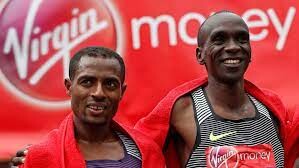
The second-fastest marathoner of all time has taken three cracks at the London Marathon, almost winning twice. He was third in 2016 and second in 2017, but injuries have hindered him since winning the 2019 Berlin Marathon in 2:01:41.
His two most recent finishes cannot be ignored–sixth at the 2021 NYC Marathon and a third-place finish in Berlin at age 39. These performances hint he still may have a chance for victory.

Bekele will have to hold off the likes of his countryman Birhanu Legese (the third-fastest marathoner in history behind world record holder Eliud Kipchoge and Bekele, with a personal best of 2:02:48), and Mosinet Geremew (2:02:55), the fifth-fastest of all time. Geremew was third at the 2021 London Marathon, while Legese was fifth.
One other Ethiopian who can’t be ignored is Sisay Lemma, who got his first Abbott Marathon Major victory in London last year. He had previously racked up wins in smaller marathons such as Frankfurt and Vienna, and finished third in three different marathon majors, including the London Marathon in 2020.
(07/08/22) Views: 81

